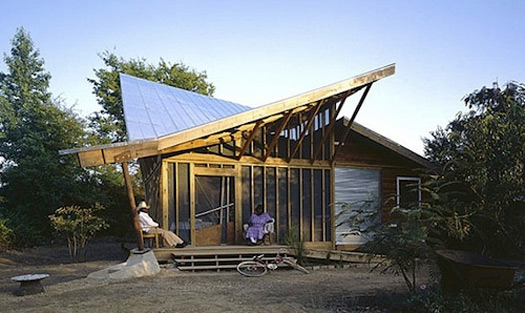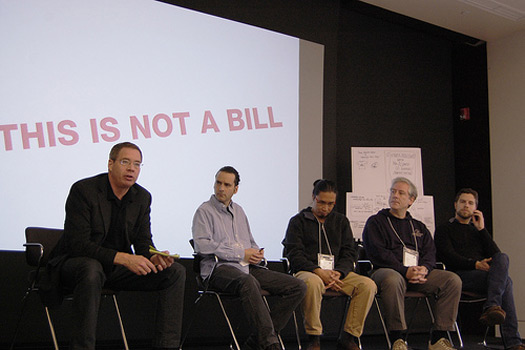Aspen Report: The TED-Types Roll Up Their Sleeves for Social Design
The latest chapter in social design occurred earlier this month in Aspen, where the latest iteration of the 50+-year-old Aspen Design Summit (PDF file) teamed up designers including Tim Brown of IDEO, our own design blogger Robert Fabricant of Frog Design, and Carnegie Mellon faculty Renna Al-Yassini. The designers assembled in studio groups to come up with real-world solutions to global problems as well as a plausible plan for funding and implementation within two years. You might think of it as the TED Conference with homework. “This isn’t a conference where people meet and agree to have another conference,” said William Drenttel, a graphic designer and a founder of the Winterhouse Institute, which organized the event with the AIGA. “We ended up with six projects and all have people committed to working on them.”…
One assignment was radically reframed. A proposed national designer center to help alleviate rural poverty — to be located in Hale County, Alabama, one of the poorest areas in the country — was rejected as a case of design imposed from on high. Instead the group focused on how to establish an apparatus that would help coordinate existing grassroots programs.
In addition to the designers, officials from UNICEF, the Mayo Clinic, and the CDC, as well as other non-government organizations, sent participants. While none of the projects are funded, these groups have expressed interest in developing four of the projects germinated at Aspen. “This is not a weekend effort,” Drenttel said. “This is about sustained engagement over a decade or so.”
Can Designers Stamp Out Rural Poverty?
Plans for a national design center to help alleviate rural poverty will be solidified when 60 designers, corporate leaders, foundation heads, and journalists meet next month for the 2009 Aspen Design Summit….
The prospective design center will be based in Hale County, Alabama, one of the poorest areas in the country. The county was chosen because it already hosts a number of similar efforts, including Project M, Teach for America and Rural Studio, a group started by the late Samuel Mockbee to help Auburn students design and build structures for poor communities in Western Alabama, including the Harris House shown above.
The center would serve as a collaborative hub and a laboratory for design ideas that could be used in Alabama or elsewhere, according to William Drenttel, a founder of the Winterhouse Institute and editorial director of Design Observer. “If ever there was a place where synergy might occur, this is it,” Drenttel said. “For example, Rural Studio is planting a vegetable garden at its headquarters. HERO (Hale Empowerment and Revitalization Organization) is planting a vegetable garden on the backside of main street. It wouldn’t take a lot to create a food initiative.” The center might also collaborate on infrastructure for health and education, house students working on local projects and direct design tourists to local works….












 Michael Cannell is the publisher of
Michael Cannell is the publisher of